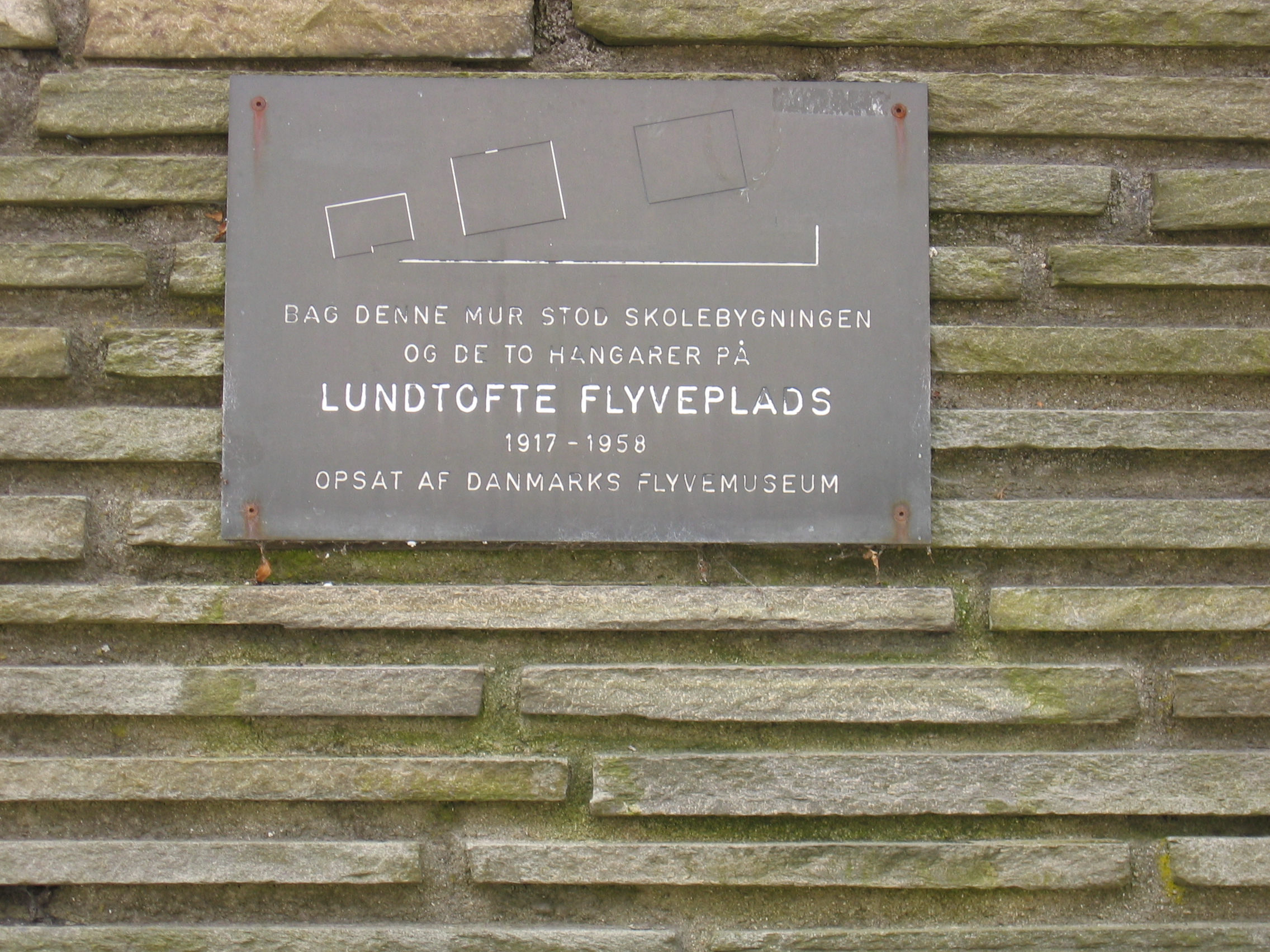Lundtofte Flyveplads on:
[Wikipedia]
[Google]
[Amazon]
Lundtofte Flyveplads (Lundtofte Aerodrome) is a former airport for both military and civilian use. Currently, the

 The central parking space at DTU is at the place of the former aerodrome buildings, and at DTU building 204 a memorial plate was erected in 1981 with the text (translated from Danish language, Danish):
The central parking space at DTU is at the place of the former aerodrome buildings, and at DTU building 204 a memorial plate was erected in 1981 with the text (translated from Danish language, Danish):
Technical University of Denmark
The Technical University of Denmark ( da, Danmarks Tekniske Universitet), often simply referred to as DTU, is a polytechnic university and school of engineering. It was founded in 1829 at the initiative of Hans Christian Ørsted as Denmark's fir ...
(DTU) is built on the site. The airport opened in 1917 and the last flight was in 1959.
History
Thenavy
A navy, naval force, or maritime force is the branch of a nation's armed forces principally designated for naval and amphibious warfare; namely, lake-borne, riverine, littoral, or ocean-borne combat operations and related functions. It include ...
flying school
Flight training is a course of study used when learning to pilot an aircraft. The overall purpose of primary and intermediate flight training is the acquisition and honing of basic airmanship skills.
Flight training can be conducted under a st ...
was looking for a new airfield location, since the Kløvermarken airfield they used at the time was to be closed soon due to the expansion of Copenhagen. A suitable area of around was found at Lundtofte. In March 1917, approval was given for the purchase of at the site and budget for construction of airfield facilities was reserved.
Inauguration and early years
The airfield was inaugurated June 22, 1917. Five aircraft would fly from the old airfield of Kløvermarken to Lundtofte and back again. Chief of the two airfields Jeff HA Hammelev was flying one of the aircraft. The flight from Kløvermarken to Lundtofte went smoothly, and festivities were held at Lundtofte. However, shortly after their landing, thunderclouds appeared, and Hammelev, who had an important meeting in Copenhagen, took off to fly back to Kløvermarken together with a mechanic, to avoid the bad weather. At Ermelunden, Denmark, Ermelunden they were caught in the bad weather and crashed. Hammelev did not survive the crash, and the mechanic was badly injured. Already two years after its inauguration, the airfield was rented out for civilian use. Air shows and aerobatics were organized on the site and planes took off from the airfield to drop flyers, display advertising banners and to distribute newspapers. In 1921 smuggling flights took off from Lundtofte, smuggling Danish silver coins to Sweden. After lawsuits, the company that exploited the airfield went bankrupt. It wasn't until 1926 that the airfield was used more intensively again, with it being used for training flights from Kløvermarken. In 1934, most training was moved to Værløse Air Base, Værløse and Lundtofte was mainly used to practice emergency landings. In 1937 a Danish company started assembling Piper J-3 Cub aircraft at Lundtofte, and buyers could also learn to fly the aircraft from Lundtofte.World War II
With the start of World War II (1939–1945) and the resulting fuel rationing, whereby most civilian activity at the airfield was discontinued. In August 1943, newspaper editor Carl Henrik Clemmensen was murdered near the airfield. In November 1944, Holger Danske (resistance group), Holger Danske of the Danish resistance movement attacked the airfield with 30 people. The airfield was guarded by the :da:SommerkorpsetSummer Corps, SommerkorpsetSummer Corps. Within 15 minutes, all defenders were killed. All but one of the attackers managed to escape. The arrested member was sent to a concentration camp, but survived the war and returned to Denmark.Thereafter
After World War II, the Military police#Denmark, Danish Military police used the airfield for training. The last motorized flights took off in 1949. Throughout the 1950s the airfield was only used for flying model aircraft and glider (aircraft), gliders. On September 13, 1959, the last flights, with gliders, took off from Lundtofte. In 1961, the last airfield buildings were demolished and construction of the DTU buildings started.Remains

 The central parking space at DTU is at the place of the former aerodrome buildings, and at DTU building 204 a memorial plate was erected in 1981 with the text (translated from Danish language, Danish):
The central parking space at DTU is at the place of the former aerodrome buildings, and at DTU building 204 a memorial plate was erected in 1981 with the text (translated from Danish language, Danish):
References
* * * {{authority control Defunct airports in Denmark